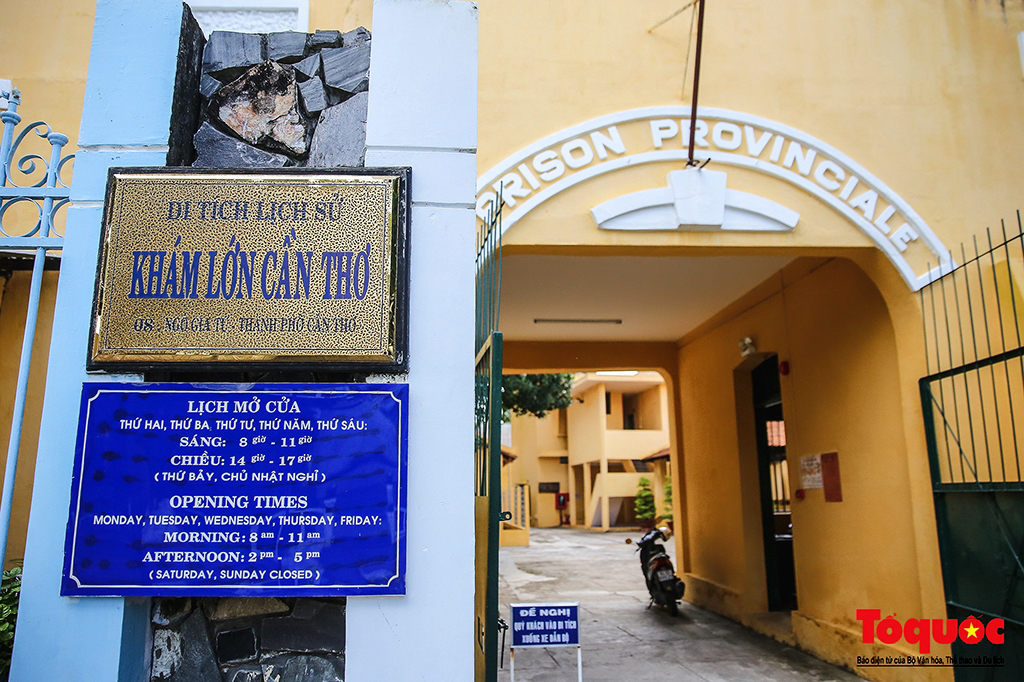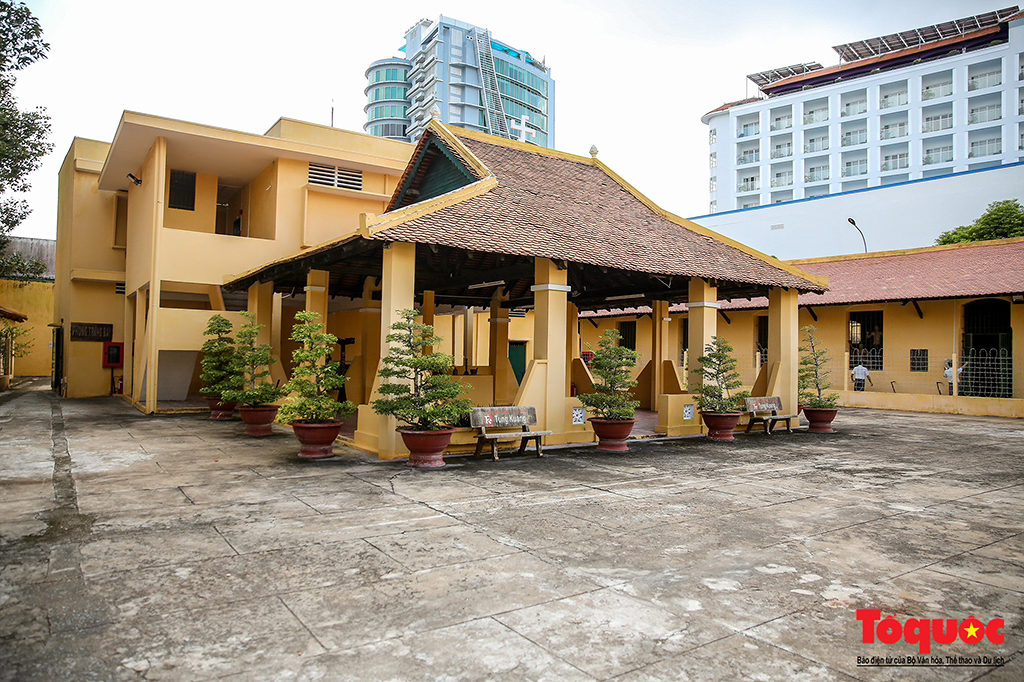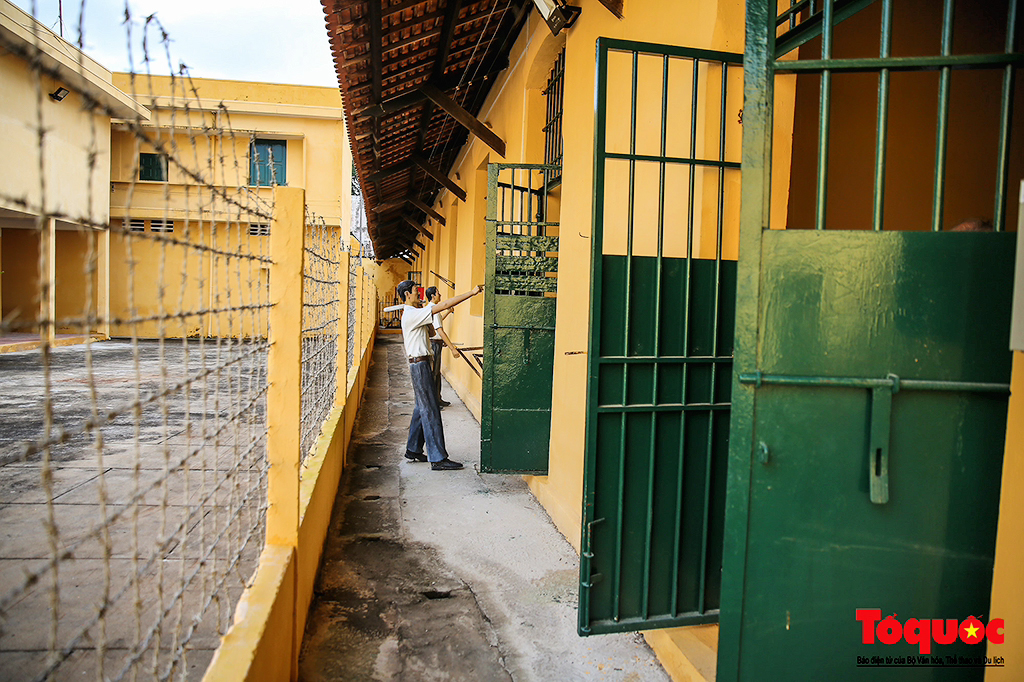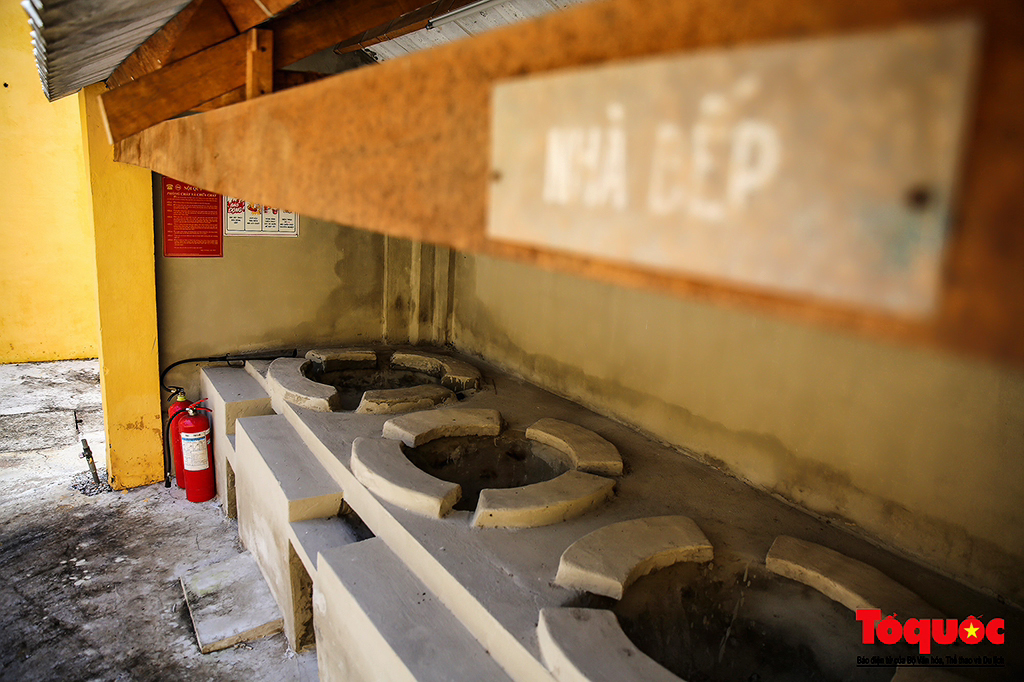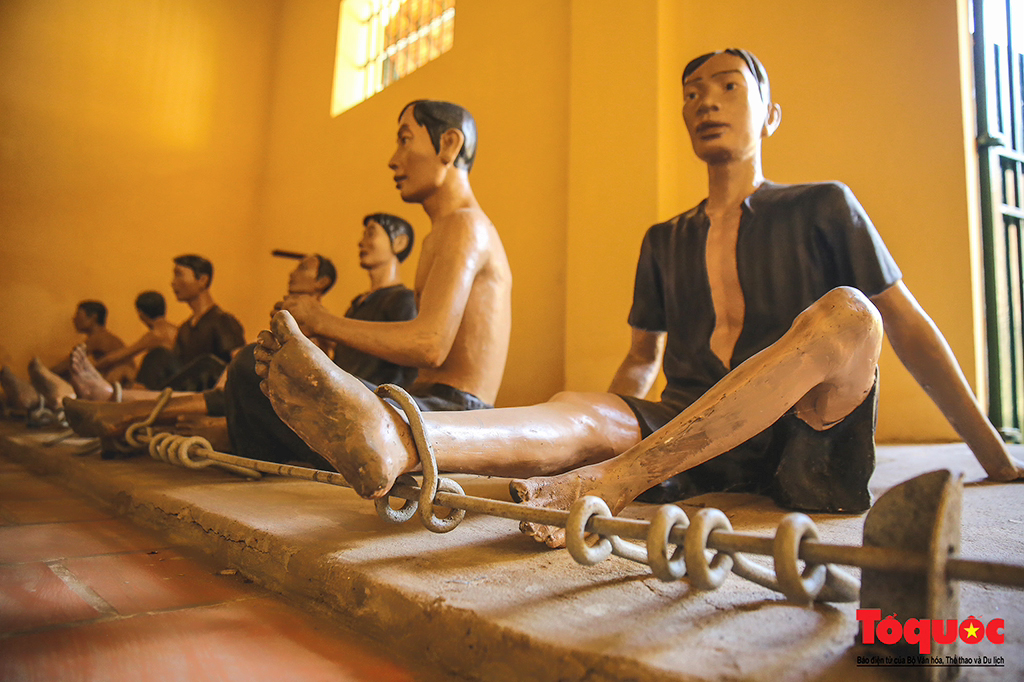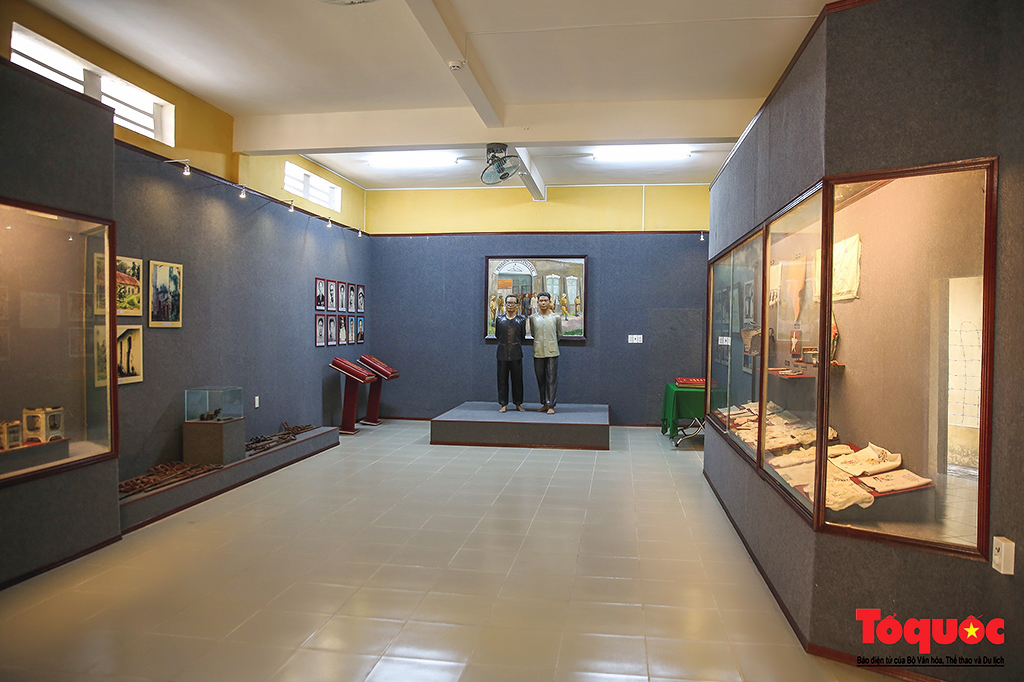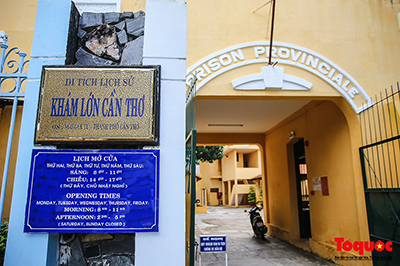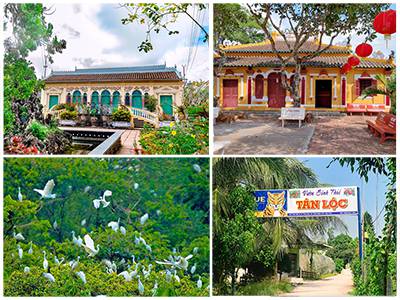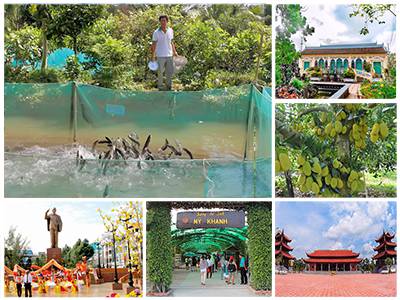Can Tho Grand Prison (Prison Provinciale), a historical relic, is currently located at No. 08, Ngo Gia Tu Street, Tan An Ward, Ninh Kieu District, Can Tho City.
To serve the governing system in Can Tho, from 1876 to 1886, the French colonists promoted building many agents, government offices, one of which was the prison named “Prison Provinciale”. The prison was built on a large area of 3.762 square meters, next to the Palace of Province chief, opposite to the Administration Hall and isolated from the residential area. It was often called Can Tho Grand Prison. When the Geneva Agreement was signed in 1954, Can Tho Province was renamed Phong Dinh Province by the Sai Gon Government, and Can Tho Grand Prison was renamed Center for Correction. Whatever it was called, Can Tho Grand Prison was in fact a hell on earth – a place where the colonialism and imperialism imprisoned, ill-treated our revolutionary fighters and patriotic fellows.
The view from the front showed the arch-shaped gate of the prison. On the left side of the gate was the row of houses kept by jailers. On the right side of the gate were a working office and also the place where the prison chief stayed. The Grand Prison was surrounded by walls which was 3,6 to 5 meters high. These barbed wire walls were thrusted on the top with pieces of broken bottles. At the corner of the walls was a 6 meter high watch tower on which there were guardians and headlights shining at night to control prisoners. Inside the Grand Prison, there were 21 collective cells and many isolated cells. Between these rows of cells, there was a big yard where prisoners could contact the sun. Inside this yard, the colonists and imperialists also built temple and church to express their respect to the belief and religions of prisoners. Around 1963, two rows of storey-house were built on the top of the rear of the temple. The ground-floor had no walls. There was time it was used as a vocational guidance house for prisoners…
The capacity regulated in each collective cell was just about 30 to 40 people, but sometimes the number of prisoners increased to 70 to 80 people. Especially after the Nam ky Uprising, the enemies frenziedly used all tricks to terrorize and avenge on our people. Many leaders, Party members, and people were captured by the French colonists at Can Tho Grand Prison such as Comrade Quan Trong Hoang (interprovincial secretary of Can Tho), Comrade Le Van Nhung (secretary of Can Tho provincial committee), Comrade Ngo Huu Hanh (standing member of Can Tho provincial committee), and many other soldiers. Additionally, they captured and tortured hundreds of people taking part in the uprising and the leaders from Soc Trang, Bac Lieu, Ca Mau in this prison. Especially, the American imperialism used the “10/59 Law” to terrorize and inhibit our people. They imprisoned all men who were suspected of being Vietnamese communists. At that time, the number of prisoners in each cell was sometimes up to 100 people. Many prisoners could not stand such imprisonment, torture, and severe meals, so they died slowly from starvation in this dark prison. The rest of those people were infected with such diseases as scabies, malaria, typhoid, tuberculosis, and so on. Regarding special political prisoners, they were put in isolated cells and tortured so hard that they became paralytic. However, they were completely loyal to the Party and people, holding their sense of purpose and uprightness until the last breath.
In spite of severe torture, the Party members in the prison founded Party cells and Party committees. They never stopped studying, planning to fight against the enemies, persistently keeping their revolutionary virtue. Once, a group of female political prisoners took a chance to beat Nam Bia (a betrayer and informer), stirring up an area of the prison. During 1968-1970, female political prisoners mobilized common prisoners for the requirement of opening prison doors so that they could get to the yard for playing, being able to choose a representative, transferring visiting gifts to prisoners, separating political prisoners from common ones, and so on. Gradually, the comrades as political prisoners showed stricter forms and demands of fighting such as going on a hunger strike, requiring pharmacists to provide medicine and doctors to cure patients, oppose salute to the colors and studying “politics”, demanding for improving the quality of prisoners’ food, and so on. It was the indominable fighting spirit, patriotism, and the love for the people of the political prisoners that moved and made many jailers and guardians revolutionary enlightened, and they volunteered to become our internal front base. They informed the political prisoners about our situations, that was to take precautions against outside enemies or to have plans for fighting with the ememies in the prison.
When the South was completely liberated, Can Tho Grand Prison became an evidence engraving a number of crimes caused by the colonialism and imperialism that never faded away. It was here that lots of excellent natives of Can Tho and nearby provinces sacrificed their lives to build to a peaceful, free, and happy life we have today, contributing to writing a resounding and heroic chapter in national history. To mark the crimes caused by the colonialism and imperialism and simultaneously teach today and future generations national patriotism, heroic and persistent fighting spirits of our ancestors in the process of national liberation and reunion, on June 28th, 1996, the Ministry of Culture and Information promulgated the Decision No. 1460-QĐ/VH, recognizing Can Tho Grand Prison as a national historical relic.
Visiting Can Tho Grand Prison, a historical relic, we can still see many photos, materials, items on display relative to or attached to each political prisoner who was once captured here. Some special items on display are embroidered pillow cover and hand-made oil stove of comrade Phan Thanh Si, objects that Comrade Le Kim Tien prepared for her lovely newborn baby in the prison, the sweater which was made by female political prisoners and given to Comrade Nguyen Thi Hue, loose-fitting blouse of Comrade Vo Thi Von. An outstanding object in the exhibition hall is the painting “Getting to the place of execution”, which describes the scene the two communist soldiers Le Van Nhung and Ngo Huu Hanh getting to the execution place in a proud manner at nine - thirty on June 4th, 1941. The author of the painter is Artist To Du.
At present, Can Tho Grand Prison, a historical relic, is a site for every kind of people to visit, study, take part in traditional activities, and play sports, especially on national memorial festivals such as South Liberation Day on April 30th; Invalids and Martyrs’ Day on July 27th and so on. The relic attracted a majority of staff and personnel from agents, committees, departments, unions and students to returning to traditional moral values, reviewing historical traditions, being grateful to the Heroes, Martyrs and patriotic fellows who bravely died for the cause of national liberation and reunion./.
Nguyễn Thị Mỹ
